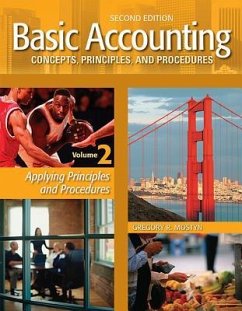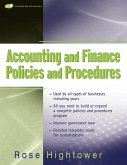1) The book functions as a comprehensive, yet very user-friendly step-by-step introduction to financial accounting. The book includes a unique self-study feature otherwise available only in expensive textbooks used exclusively for the classroom: the book contains both practice tests and answers and over 900 questions and problems, all with fully-available detailed answers included in the book's CD and online for desktop and mobile use (See page xix: ''How to Use This Book.'') 2) The book functions as a practical reference for bookkeepers, managers, owners, and investors who need to understand accounting methods and who use accounting information. (Some examples, see: other closing techniques 273, completing the cycle 288, alternate inventory methods 315, 321, 358, 437, 711, take a discount? 446, new information systems 512, depreciation misconceptions 747, accounting software checklist 918, reversing and correcting entries -- on disk, cash budgeting -- on disk).
Bitte wählen Sie Ihr Anliegen aus.
Rechnungen
Retourenschein anfordern
Bestellstatus
Storno



![PRIC DERIV SECUR (2ND ED)[W/ CD] PRIC DERIV SECUR (2ND ED)[W/ CD]](https://bilder.buecher.de/produkte/26/26618/26618945n.jpg)
![PRIC DERIV SECUR (2ND ED)[W/ CD] PRIC DERIV SECUR (2ND ED)[W/ CD]](https://bilder.buecher.de/produkte/22/22701/22701580n.jpg)

![Granite Bay Jet Ski, Level 2, MP W/CD-ROM [With CDROM] Granite Bay Jet Ski, Level 2, MP W/CD-ROM [With CDROM]](https://bilder.buecher.de/produkte/40/40220/40220905m.jpg)
